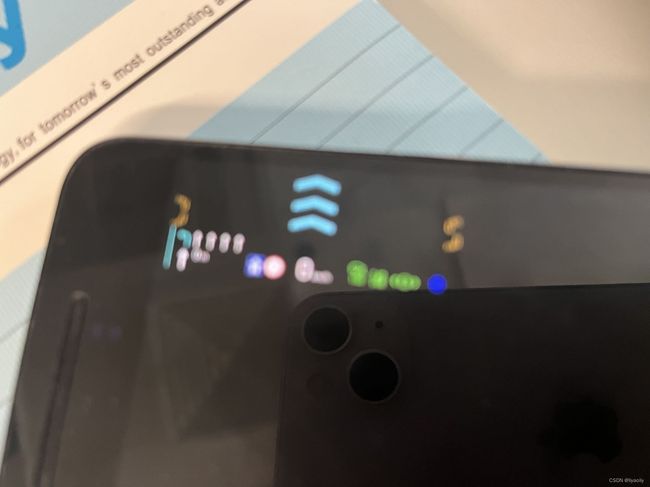OpenGl ES---纹理
什么是纹理?
纹理:最通常就是装饰3D物体,像贴纸一样贴在物体表面,在OpenGl ES中除了装饰物体表面,还用来
作为数据的容器。
在OpenGL中,纹理实际上是一个可以被采样的复杂数据集合,是GPU使用的图像数据结构,分为:2D纹理,立方体纹理和3D纹理。
2D 纹理是 OpenGLES 中最常用和最常见的纹理形式,是一个图像数据的二维数组。纹理中的一个单独数据元素称为纹素或纹理像素。
纹理映射?
通过图元的顶点坐标指定恰当的纹理坐标,通过纹理坐标在纹理图中选定特定的纹理区域, 最后通过纹理坐标与顶点的映射关系,将特定的纹理区域映射到指定图元上。
纹理映射也称为纹理贴图,简单说:将纹理坐标所指定的纹理区域,映射到顶点坐标对应的区域。
纹理坐标系:

渲染坐标系或opengl ES坐标系:

4个纹理坐标分别为:
T0(0,0),T1(0,1),T2(1,1),T3(1,0);
4个纹理坐标对应的顶点坐标:
V0(-1,0.5),V1(-1,-0.5),V2(1,-0.5),V3(1,0.5)
由于OpenGLES绘制是以三角形为单位,设置绘制的2个三角形为V0V1V2和V0V2V3.
当我们调整纹理坐标的顺序,顶点坐标顺序不变,如T0T1T2T3–>T1T2T3T0,绘制后将得到一个顺时针
旋转90度的纹理贴图。因此可以通过纹理坐标和顶点坐标的对应关系实现纹理简单旋转。
纹理映射的简单实现
步骤:
1,生成纹理,编译链接着色器程序
2,确定纹理坐标及对应的顶点坐标
3,加载图像数据到纹理,加载纹理坐标和顶点坐标到着色器程序
4.绘制
生成纹理并加载图像数据到纹理
//生成一个纹理,将纹理 id 赋值给 m_TextureId
glGenTextures(1, &m_TextureId);
//将纹理 m_TextureId 绑定到类型 GL_TEXTURE_2D 纹理
glBindTexture(GL_TEXTURE_2D, m_TextureId);
//设置纹理 S 轴(横轴)的拉伸方式为截取
glTexParameterf(GL_TEXTURE_2D, GL_TEXTURE_WRAP_S, GL_CLAMP_TO_EDGE);
//设置纹理 T 轴(纵轴)的拉伸方式为截取
glTexParameterf(GL_TEXTURE_2D, GL_TEXTURE_WRAP_T, GL_CLAMP_TO_EDGE);
//设置纹理采样方式
glTexParameteri(GL_TEXTURE_2D, GL_TEXTURE_MIN_FILTER, GL_LINEAR);
glTexParameteri(GL_TEXTURE_2D, GL_TEXTURE_MAG_FILTER, GL_LINEAR);
//加载 RGBA 格式的图像数据
glTexImage2D(GL_TEXTURE_2D, 0, GL_RGBA, m_RenderImage.width, m_RenderImage.height, 0, GL_RGBA, GL_UNSIGNED_BYTE, m_RenderImage.ppPlane[0]);
对纹理采样的片元着色器脚本
#version 300 es
precision mediump float;
in vec2 v_texCoord;
layout(location = 0) out vec4 outColor;
uniform sampler2D s_TextureMap; //声明采用器
void main()
{
// texture() 为内置的采样函数,v_texCoord 为顶点着色器传进来的纹理坐标
// 根据纹理坐标对纹理进行采样,输出采样的 rgba 值(4维向量)
outColor = texture(s_TextureMap, v_texCoord);
}
实例1:
// 生成纹理,编译链接着色器程序
void TextureMapSample::Init()
{
//create RGBA texture
glGenTextures(1, &m_TextureId);
glBindTexture(GL_TEXTURE_2D, m_TextureId);
glTexParameterf(GL_TEXTURE_2D, GL_TEXTURE_WRAP_S, GL_CLAMP_TO_EDGE);
glTexParameterf(GL_TEXTURE_2D, GL_TEXTURE_WRAP_T, GL_CLAMP_TO_EDGE);
glTexParameteri(GL_TEXTURE_2D, GL_TEXTURE_MIN_FILTER, GL_LINEAR);
glTexParameteri(GL_TEXTURE_2D, GL_TEXTURE_MAG_FILTER, GL_LINEAR);
glBindTexture(GL_TEXTURE_2D, GL_NONE);
char vShaderStr[] =
"#version 300 es \n"
"layout(location = 0) in vec4 a_position; \n"
"layout(location = 1) in vec2 a_texCoord; \n"
"out vec2 v_texCoord; \n"
"void main() \n"
"{ \n"
" gl_Position = a_position; \n"
" v_texCoord = a_texCoord; \n"
"} \n";
char fShaderStr[] =
"#version 300 es \n"
"precision mediump float; \n"
"in vec2 v_texCoord; \n"
"layout(location = 0) out vec4 outColor; \n"
"uniform sampler2D s_TextureMap; \n"
"void main() \n"
"{ \n"
" outColor = texture(s_TextureMap, v_texCoord); \n"
"} \n";
m_ProgramObj = GLUtils::CreateProgram(vShaderStr, fShaderStr, m_VertexShader, m_FragmentShader);
if (m_ProgramObj)
{
m_SamplerLoc = glGetUniformLocation(m_ProgramObj, "s_TextureMap");
}
else
{
LOGCATE("TextureMapSample::Init create program fail");
}
}
// 加载图像数据、纹理坐标和顶点坐标数据,绘制实现纹理映射
void TextureMapSample::Draw(int screenW, int screenH)
{
LOGCATE("TextureMapSample::Draw()");
if(m_ProgramObj == GL_NONE || m_TextureId == GL_NONE) return;
GLfloat verticesCoords[] = {
-1.0f, 0.5f, 0.0f, // Position 0
-1.0f, -0.5f, 0.0f, // Position 1
1.0f, -0.5f, 0.0f, // Position 2
1.0f, 0.5f, 0.0f, // Position 3
};
GLfloat textureCoords[] = {
0.0f, 0.0f, // TexCoord 0
0.0f, 1.0f, // TexCoord 1
1.0f, 1.0f, // TexCoord 2
1.0f, 0.0f // TexCoord 3
};
GLushort indices[] = { 0, 1, 2, 0, 2, 3 };
//upload RGBA image data
glActiveTexture(GL_TEXTURE0);
glBindTexture(GL_TEXTURE_2D, m_TextureId);
glTexImage2D(GL_TEXTURE_2D, 0, GL_RGBA, m_RenderImage.width, m_RenderImage.height, 0, GL_RGBA, GL_UNSIGNED_BYTE, m_RenderImage.ppPlane[0]);
glBindTexture(GL_TEXTURE_2D, GL_NONE);
// Use the program object
glUseProgram (m_ProgramObj);
// Load the vertex position
glVertexAttribPointer (0, 3, GL_FLOAT,
GL_FALSE, 3 * sizeof (GLfloat), verticesCoords);
// Load the texture coordinate
glVertexAttribPointer (1, 2, GL_FLOAT,
GL_FALSE, 2 * sizeof (GLfloat), textureCoords);
glEnableVertexAttribArray (0);
glEnableVertexAttribArray (1);
// Bind the RGBA map
glActiveTexture(GL_TEXTURE0);
glBindTexture(GL_TEXTURE_2D, m_TextureId);
// Set the RGBA map sampler to texture unit to 0
glUniform1i(m_SamplerLoc, 0);
glDrawElements(GL_TRIANGLES, 6, GL_UNSIGNED_SHORT, indices);
}
结果:

实例2:
CoordSystemSample.h代码:
/**
*
* Created by 公众号:字节流动 on 2020/4/18.
* https://github.com/githubhaohao/NDK_OpenGLES_3_0
* 最新文章首发于公众号:字节流动,有疑问或者技术交流可以添加微信 Byte-Flow ,领取视频教程, 拉你进技术交流群
*
* */
#ifndef NDK_OPENGLES_3_0_COORDSYSTEMSAMPLE_H
#define NDK_OPENGLES_3_0_COORDSYSTEMSAMPLE_H
#include "detail/type_mat.hpp"
#include "detail/type_mat4x4.hpp"
#include "GLSampleBase.h"
#include CoordSystemSample.cpp代码:
/**
*
* Created by 公众号:字节流动 on 2020/4/18.
* https://github.com/githubhaohao/NDK_OpenGLES_3_0
* 最新文章首发于公众号:字节流动,有疑问或者技术交流可以添加微信 Byte-Flow ,领取视频教程, 拉你进技术交流群
*
* */
#include "gtc/matrix_transform.hpp"
#include "CoordSystemSample.h"
#include "../util/GLUtils.h"
#define STB_IMAGE_IMPLEMENTATION
#include "stb_image.h"
#include 